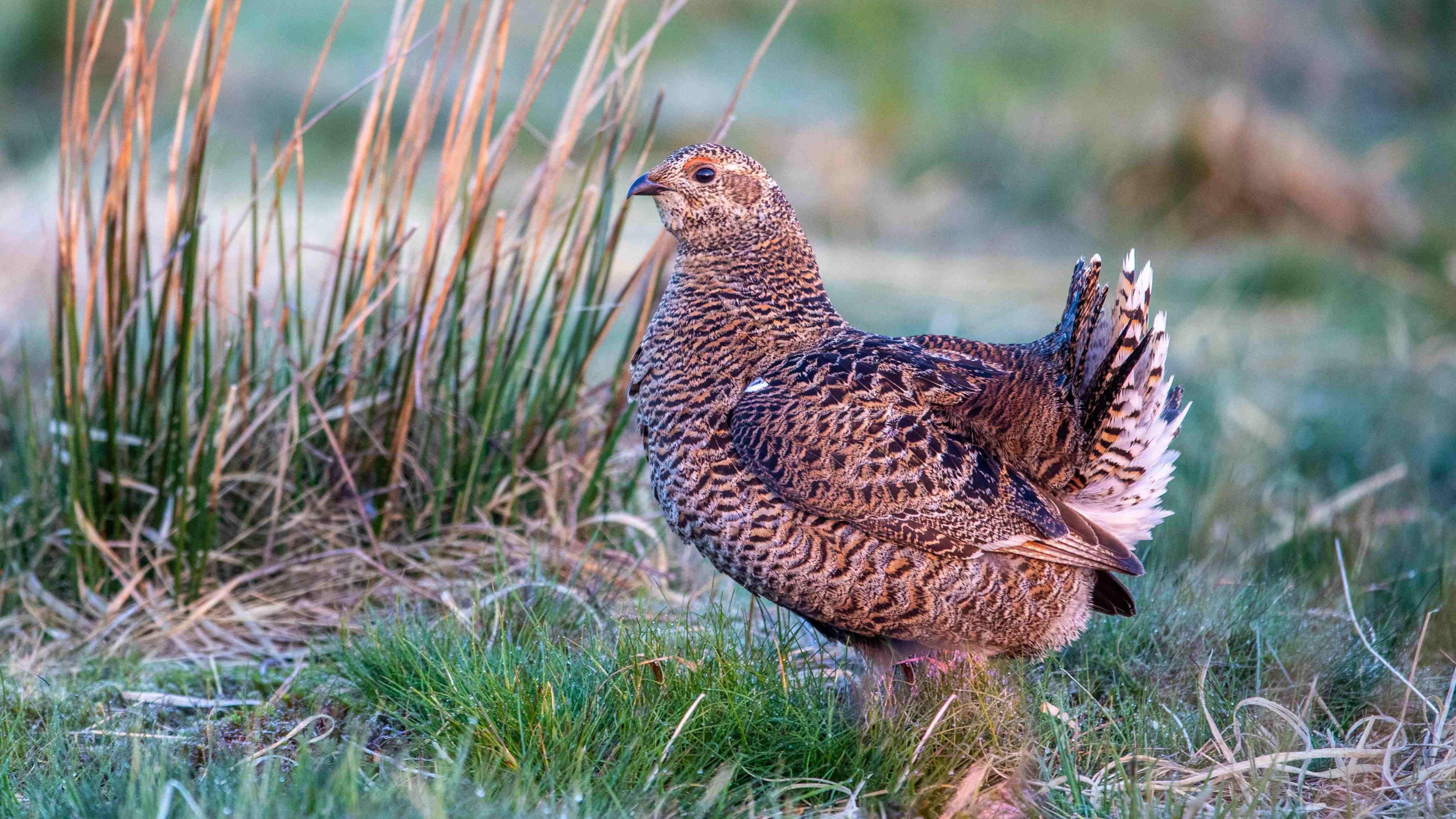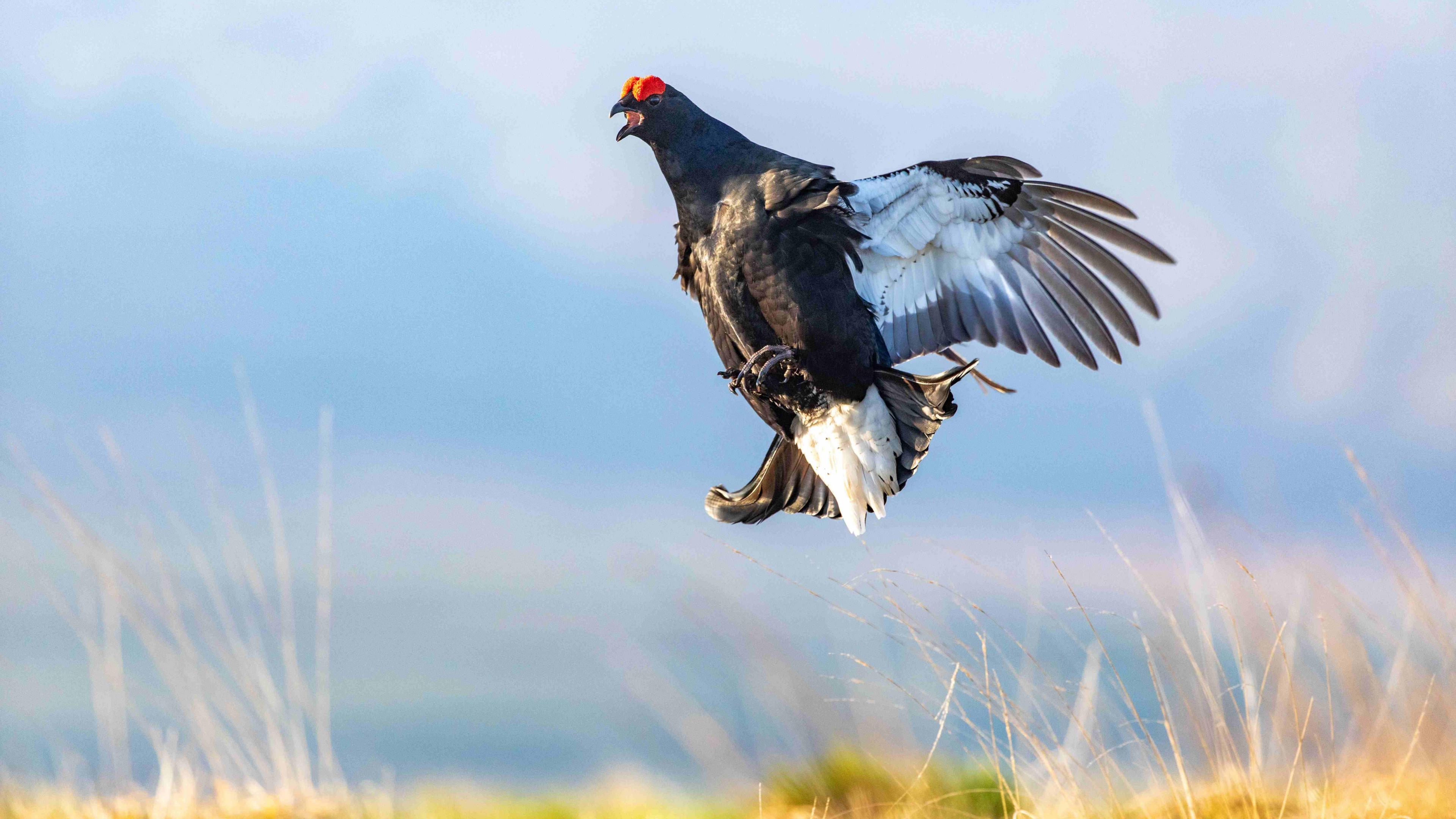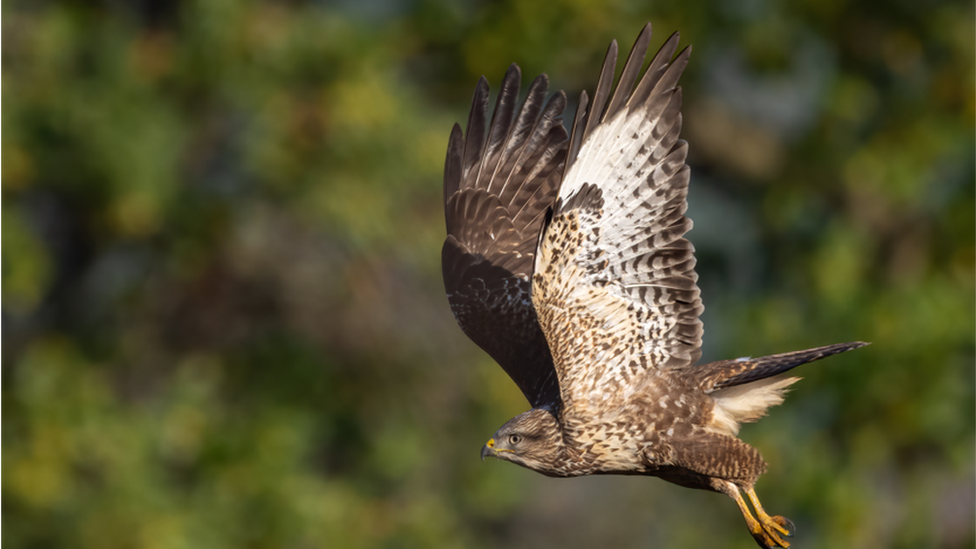Black grouse back on moors after almost 200 years

Black grouse "lekking" - where males gather to compete for females
- Published
A project to reintroduce black grouse to the North York Moors after nearly 200 years has begun.
Conservationists say the birds are largely restricted to the North Pennines, between the Yorkshire Dales and Northumberland, and have been carrying out work to create a more suitable environment to the moorland in North Yorkshire.
The project, led by the Game and Wildlife Conservation Trust (GWCT), aims to expand the birds' range and recolonise areas where they once bred.
The GWCT said while there had been "sporadic sightings" of black grouse in the North York Moors, there had been no record of them breeding there since the 1840s.
Project officer Dr Phil Warren said: “Natural recolonisation of black grouse to the North York Moors from the existing populations in the North Pennines is currently limited by the 30km gap across unsuitable lowland farmland habitats in the Vale of Mowbray, which is on the limit of the dispersal range of black grouse.
“In recent years, occasional females have been seen, but no breeding recorded.
"We wish to help them re-establish here by moving birds to take advantage of habitat improvements and a likely more favourable climate, which is typically drier and warmer in June when chicks hatch.”

Female black grouse have brown and black plumage
Black grouse are red listed as a species of high conservation concern.
The project will involve capturing the birds at night and relocating them immediately to a specially selected site on the North York Moors, with some fitted with radio transmitters to help track their movements.
The new location was selected after habitat improvements, including removal of conifer woodland and restoration to bog, heath and scrub woodland.
The project is being led by researchers from the GWCT Uplands team and funded with £164,000 from Natural England’s Species Recovery Programme Capital Grant Scheme.

Male black grouse sing a long, dove-like bubbling coo
What are black grouse?
Black grouse are large birds that live on moorlands and forest edges. According to the Woodland Trust, their populations are in “serious decline”.
They are generally found in the uplands of the north of England, North Wales and Scotland.
They are best known for their early morning, spring-time gatherings, called "leks", where the males gather to compete for females.
The male’s song consists of a long, dove-like bubbling coo or murmur and the females have a cackling call.
Males are jet black with long, curved tail feathers. They have a slim white stripe in the wing and white feathers under the tail.
Females are well camouflaged with finely barred brown and black plumage.
It is legal to shoot black grouse in season (20 August to 10 December). But, according to the GWCT, there has been a voluntary ban on shooting them because numbers are so low.
Listen to highlights from North Yorkshire on BBC Sounds, catch up with the latest episode of Look North or tell us a story you think we should be covering here, external.
Related internet links
- Published23 April 2024
